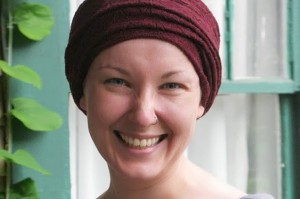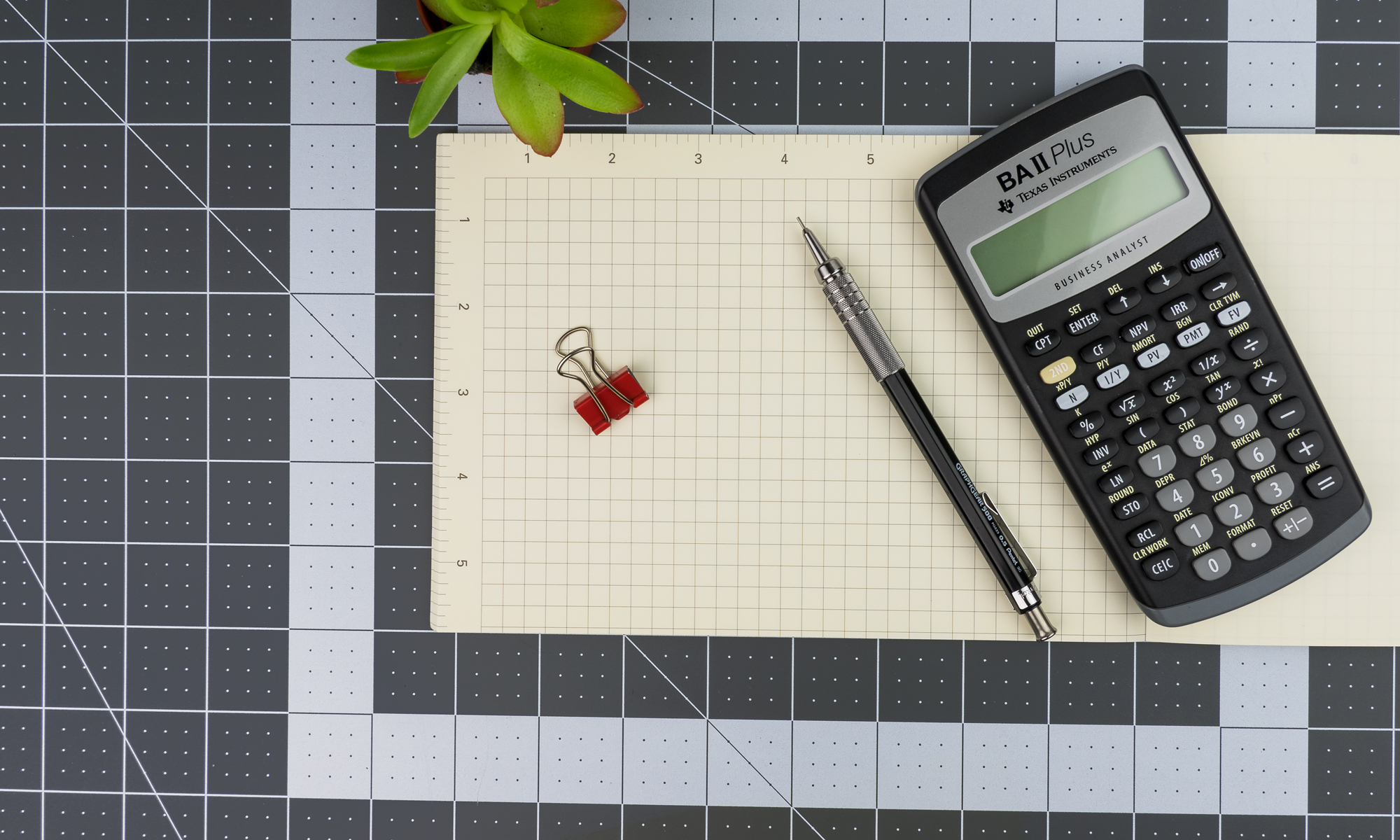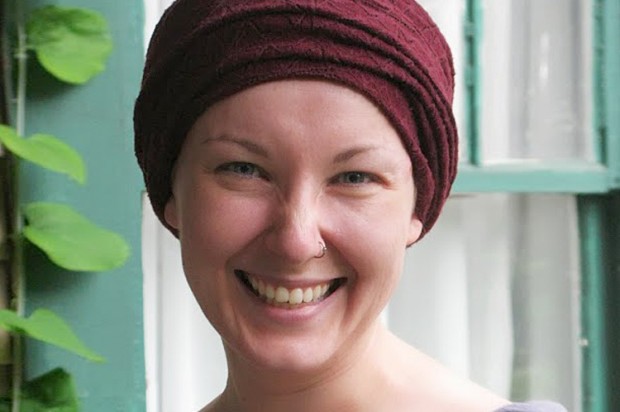
Single? You may have never guessed that the answer to finding a husband is simple: just cover those skanky knees of yours because if there’s one thing men hate, it’s exposed joints. Or so says Lauren Shields, erstwhile blogger and soon-to-be-author of The Modesty Experiment—the latest in the subgenre of experimental memoir (i.e., the bastard child of Ryan Seacrest and Elizabeth Wurtzel). The Modesty Experiment is a rather bland title, so I’m hoping it includes a peppier subtitle like, “Sluts die alone!” or “Love your body by pretending it doesn’t exist!” Both would be fitting because Shields appears to believe that women’s body issues can all be solved if women just pretend they don’t have bodies. Who knew it was that simple! I guess we can all get rid of our therapists now and spend all that saved money on cardigans! In order to achieve this liberation, women simply need to follow an extremely labor intensive and time consuming dress code.
Oh wait, we’re already doing that…
Shield’s recent advertisement for her book essay in Salon initially appears well intentioned as she critiques the beauty industrial complex that Dustin Hoffman has been making us all cry about for the past week. After Shields discovered that she was no less vain than other women, she sought to challenge the cultural belief that a woman’s relevance is directly related to her appearance. Fantastic: two feminist gold stars! She sought to perform this experiment by dressing in nothing but baggy clothes for a year. Makes sense to me. And no makeup. Sounds good. And her hair fully covered so that not a single strand could be seen. Well, now I’m confused. See, Shields isn’t trying to experience what it’s like to actually stop caring about your appearance. She’s trying to see what it’s like to dress like a Hasidic Jewish woman. There are a few problems here.
First, it’s fairly offensive to play dress up with a religious community’s cultural practices. Whether you agree with them or not, it’s still obnoxious. Second, does she seriously believe that religious women who dress “modestly” aren’t invested in appearing young and beautiful? In the recently released Israeli film Fill the Void, director Rama Burshtein depicts women in an ultra-Orthodox Haredi community in Tel Aviv. Youth and attractiveness play a central role in a woman’s marriageability and, consequently, their lives. A major plot point involves an older sister who remains unmarried because she’s considered less attractive: it’s like Downton Abbey in Hebrew. And Burshtein is an ultra-Orthodox Israeli woman. So this suggests that “modesty” doesn’t necessarily shield women from beauty standards. It just establishes a new set of standards.
Degrees of “modesty” are also not necessarily proportional to the amount of time or money a woman spends on her appearance—as Shields herself suggests in her blog. Jezebel writer Katie J.M. Baker notes that most of Shield’s blog posts consist of complaints about how expensive, difficult, time-consuming, anxiety-producing, and uncomfortable this whole experiment turned out to be. This shouldn’t be surprising. Shield’s project took place in Georgia, so she was dressed in wool tights and a sweater during August in Atlanta. I’m pretty sure that the girls wandering around the city in sundresses from H&M were probably a bit more comfortable.
And they probably also spent less money. It’s certainly true that dating while female can be an expensive proposition. When one factors in makeup, haircuts, waxing, and nail care, you would think that young women spend a quarter of their day—and 75 percent of their income—grooming themselves. But most women I know usually only go to that much trouble for the first few months of dating before turning back into their occasionally hairy selves. Now, if women are going into debt because they think they’re unworthy of airspace if they don’t look like Giselle, then, yes, there’s a serious problem. But how is obsessing about whether a piece of your hair is visible any different?
But, never fear, the entire project is still worth it because, in the end, Shields finds a man who deems her worthy of existence. Without recognizing the misogyny in her own statement, Shields writes, “I even heard from a lot of guys who swore that the more made-up and “rich” a woman looked (think the Kardashians), the less inclined they felt to take her seriously, either as a co-worker or a dating prospect.” I’m sure that this totally representative sample of “a lot of guys” couldn’t possibly have come to this conclusion because they associate overt femininity with frivolousness. And even if many men do prefer women who are less “made up,” who cares? I thought the entire point of this experiment was about moving beyond male expectations of female beauty.
But the fact that Shields chose to do a “modesty experiment” instead of a “I don’t give a fuck” experiment suggests that she does care about male approval. And this is what truly bothers me. Shields uses the term “modesty” yet pretends not to know what the word actually means. Modesty isn’t about beauty. It’s historically about control. It’s about the idea that there is something inherently troubling about a women’s body, so it needs to be covered so as not to arouse men. Now, I’m all for people following whatever religious practices they chose, and I know Orthodox women usually consider their covering an extension of their relationship with God. But the term “modesty” has a history, and using the term without any recognition of this cultural context is offensive. While the hypersexualization of women’s bodies is incredibly problematic, the disavowing of the sexual body can be equally troubling. In both instances the woman often disappears.
Now, my hair and makeup routine takes about fifteen minutes, and I refuse to wear heels because I still have nerve endings in my toes. So I may not be the epitome of the perfectly coiffed women Shields describes seeing in the New York City subways everyday. (I’m really curious which train she takes.) But I do know one or two things about being obsessed with appearances. See, I also spent a period of time VERY invested in my appearance followed by a few years when I gave up on tight clothing and makeup altogether. It’s a little thing I liked to call the anorexia experiment. Like Shields, I saved money (food costs a lot, ya’ll). I didn’t have to go to the salon because my hair was falling out, so, again, pennies saved. And I grew fur. It’s like a free sweater! Once I decided that dying at twenty-three was probably not the best life choice, I gained thirty pounds and no longer looked like a Polish heroin addict. But for another six months, I continued to dress like a guy because I was done with the obsessions, done with being so attached to my body, done with being a woman, done with it all. Until I wasn’t.
Although there was safety in refusing to care what I looked like, it was also a way of hiding. It meant being disconnected from my body in every way—including the whole having orgasms way. Maybe some people can be completely detached from their bodies and still be sexual beings. But I’m not one of those people.
And it’s summer. It’s about 150 degrees outside. No one is modest enough for a sweater.

